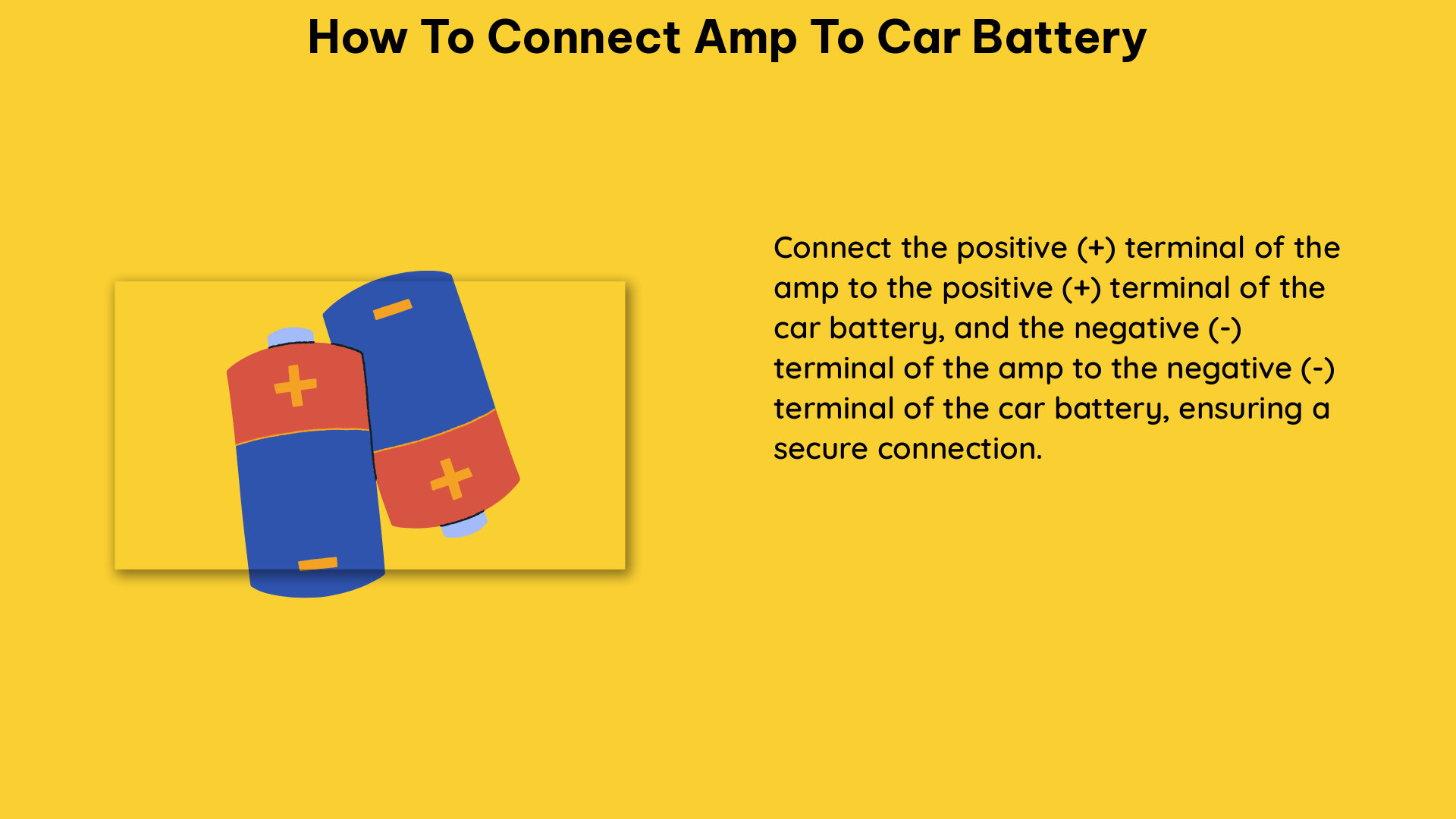Connecting an amplifier to a car battery requires careful planning and execution to ensure a secure and safe connection. This comprehensive guide will walk you through the essential steps, providing detailed information and quantifiable data to help you successfully integrate your amplifier into your vehicle’s electrical system.
Selecting the Appropriate Power Wire Gauge
The power wire gauge is a crucial factor in determining the capacity of your amplifier’s power supply. For most amplifiers, a 4-gauge or 8-gauge power wire is sufficient. However, for high-powered amplifiers (over 1000 watts), a 0-gauge or 1/0-gauge wire may be necessary.
| Gauge | Maximum Current Capacity |
|---|---|
| 0 | 175 amps |
| 4 | 95 amps |
| 8 | 40 amps |
The larger the gauge number, the thinner the wire, and the less current it can handle. It’s essential to choose the appropriate wire gauge to prevent overheating, voltage drops, and potential fire hazards.
Connecting the Power Wire to the Battery

To connect the power wire to the battery, you’ll need to use a ring terminal and attach it to the positive battery terminal. Ensure that you use a wrench to tighten the terminal securely, as a loose connection can lead to voltage drops and potential issues.
If your vehicle has a side-mount battery post, you may need to use a terminal adapter to accommodate the ring terminal. This adapter will provide a flat surface for the ring terminal to attach to the battery post.
Routing the Power Wire
The power wire needs to run from the battery, through the car’s firewall, and to the amplifier. You can use an existing grommet in the firewall or drill a new hole and use a grommet to prevent the insulation from scraping against metal. This step is crucial to protect the wire and prevent potential short circuits.
Additionally, a wire loom can provide added protection for the wire against high heat in the engine compartment. The wire loom will help to shield the wire from abrasion, heat, and other environmental factors that could compromise the integrity of the power connection.
Grounding the Amplifier
The ground wire should be connected to a bolt or screw on the vehicle’s metal frame as close to the amplifier as possible. Ensure that the connection is secure and free from any stray wire strands that could cause a short circuit. A loose ground connection can lead to noise and interference in the audio signal.
When grounding the amplifier, it’s essential to use a wire with the same gauge as the power wire to maintain a balanced and stable power supply. Improper grounding can result in poor sound quality, ground loops, and other electrical issues.
Connecting the Amplifier to the Battery
Once the power and ground wires are connected, you can connect the amplifier to the battery. Make sure to use the correct plug for the amplifier’s power cord, usually labeled “Main” or “Power cord”. The amplifier should be wired directly to the battery, not through the car’s electrical system, to ensure a clean and reliable power supply.
When connecting the amplifier, it’s crucial to follow the manufacturer’s instructions and recommendations to ensure compatibility and proper operation. Improper connections can lead to damage to the amplifier, the car’s electrical system, or even safety hazards.
Conclusion
Connecting an amplifier to a car battery requires attention to detail and the use of the right tools and materials. By following the steps outlined in this comprehensive guide, you can ensure a secure and safe connection that will provide your audio system with the power it needs to deliver an exceptional listening experience.
Remember to always prioritize safety and consult with a professional if you’re unsure about any aspect of the installation process.
References
- Measuring Car Battery Amps
- Connecting Two Amps with Using Same and Cable from Battery and Chassis
- Should I Use 4, 2, or 0 Gauge Wires for Powering an Amplifier from the Car Battery?
- Amplifier Installation Guide
- Connecting an Amplifier to a Car Battery

The lambdageeks.com Core SME Team is a group of experienced subject matter experts from diverse scientific and technical fields including Physics, Chemistry, Technology,Electronics & Electrical Engineering, Automotive, Mechanical Engineering. Our team collaborates to create high-quality, well-researched articles on a wide range of science and technology topics for the lambdageeks.com website.
All Our Senior SME are having more than 7 Years of experience in the respective fields . They are either Working Industry Professionals or assocaited With different Universities. Refer Our Authors Page to get to know About our Core SMEs.